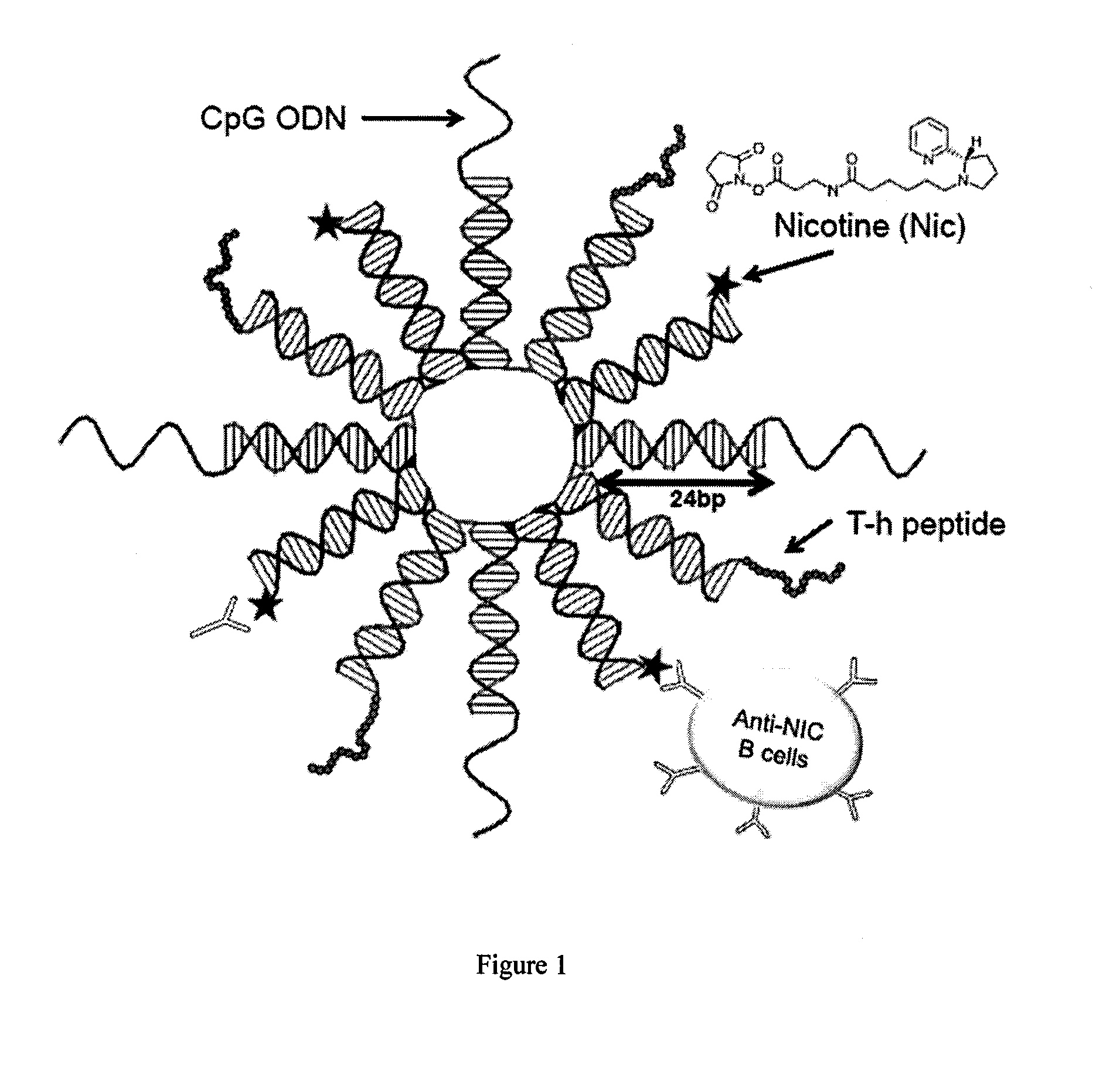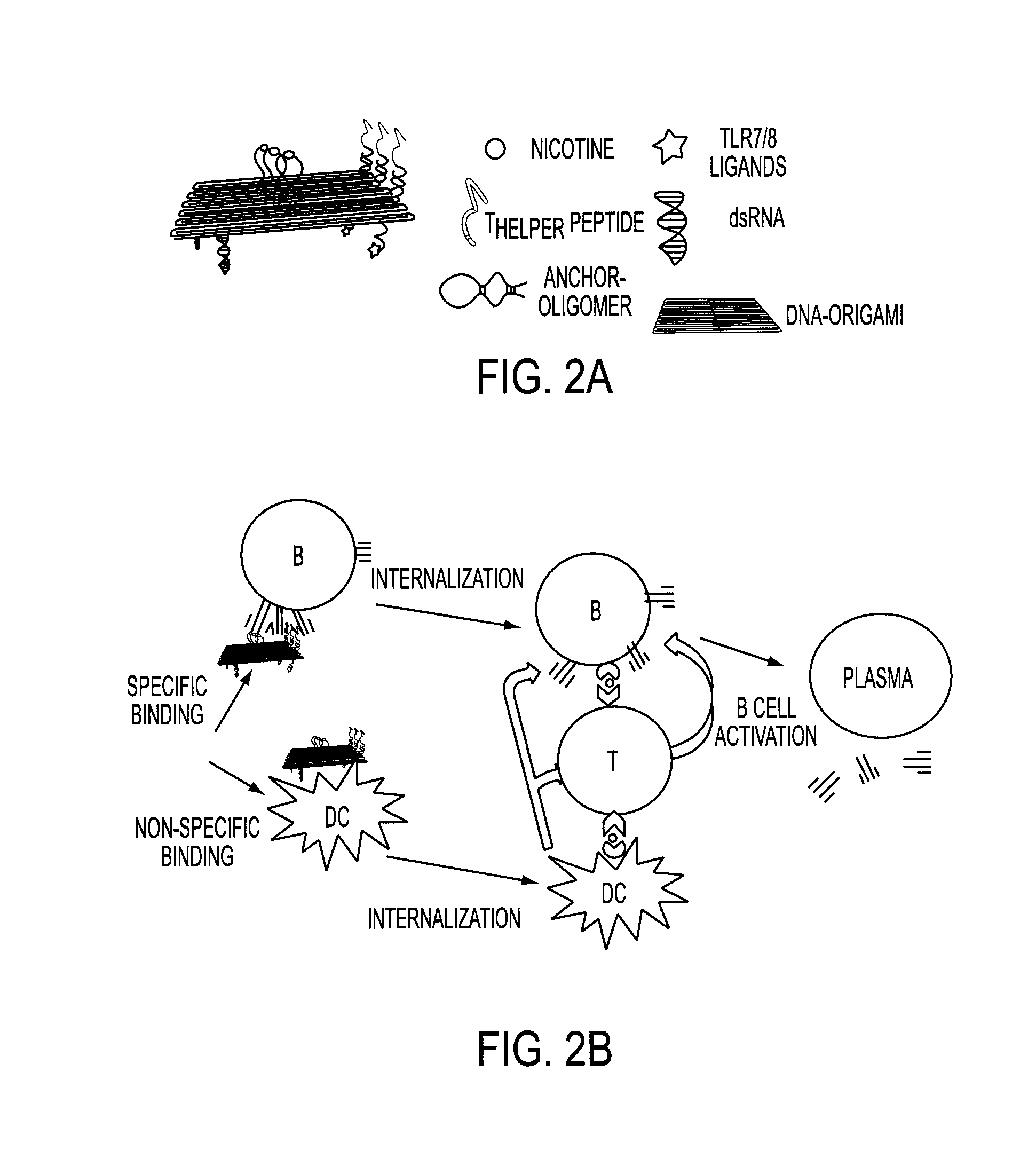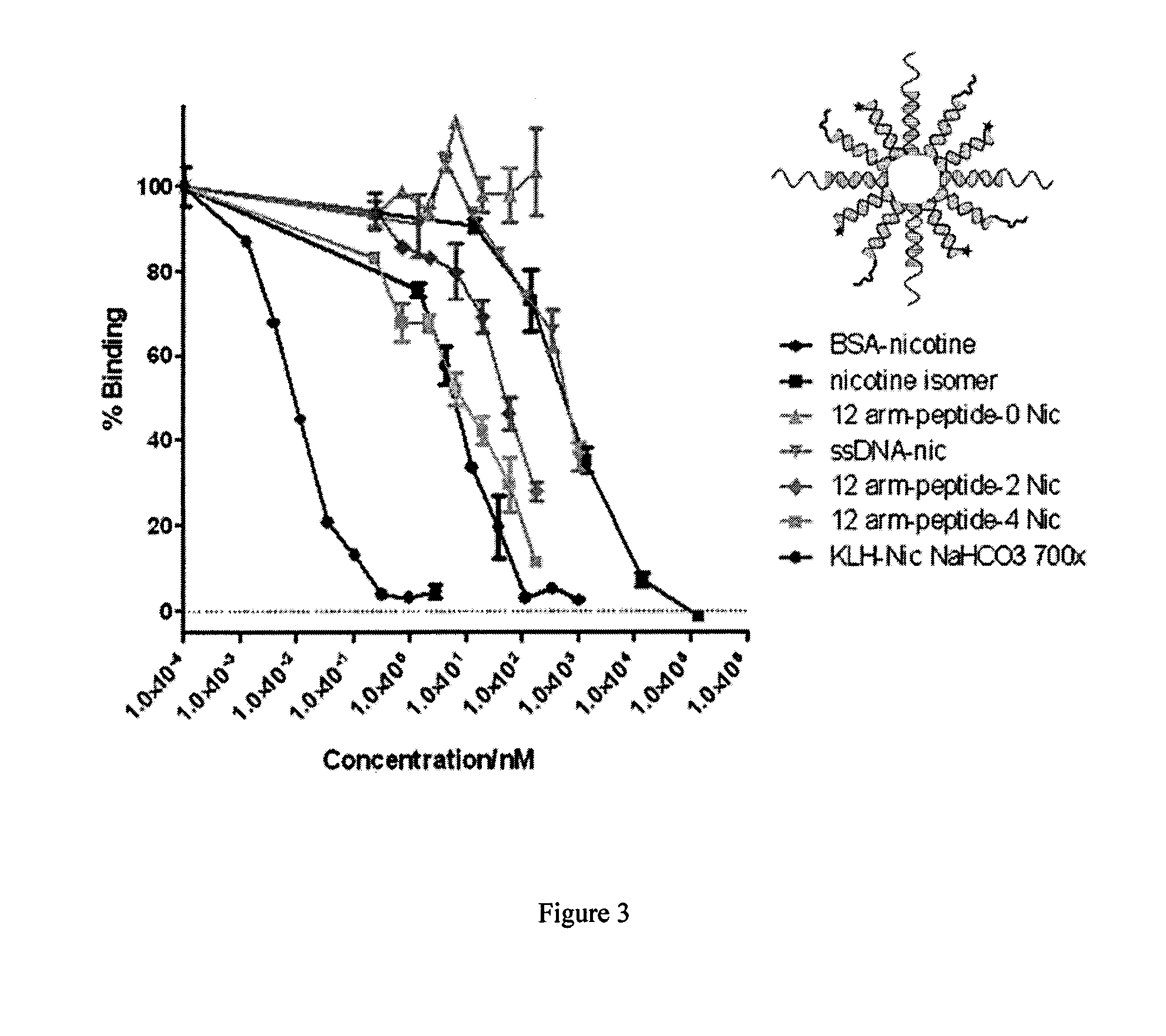Novel nicotine DNA vaccines
a nicotine dna and vaccine technology, applied in the field of new nicotine dna vaccines, can solve the problems of vaccines that have demonstrated limited efficacy, difficult modification, and protein-hapten conjugates that are not easy to facilitate simple systematic evaluation, and achieve the effect of preventing nicotine addiction
- Summary
- Abstract
- Description
- Claims
- Application Information
AI Technical Summary
Benefits of technology
Problems solved by technology
Method used
Image
Examples
example 1
[0158]Tetrahedron DNA offers up to 36 sites for engineering various antigenic components. We elected to assemble hapten, Th-epitopes and adjuvants at a ratio of 12:12:12. Specifically, each antigenic component was linked to a unique oligonucleotide and subsequently assembled with the desired ratio to form the DNA-NIC complex. Here, we focused on a single modified NIC for oligonucleotide conjugation in which the linker was attached via the pyrrolidine moiety of NIC. As reported by Janda et al (4), this linker can confer excellent NIC immunogenicity upon conjugation to a protein carrier, to which the NIC-specific antibody generated was used to construct AAV-Nic for the passive immunization (17). The proper display of NIC on the DNA surface is critical to its recognition by NIC-specific B cells. To determine the NIC configuration on the DNA in terms of its ratio and surface presentation, we developed an antibody-based detection method. This method allowed determination whether the NIC-...
example 2
[0159]Tetrahedron DNA appears to promote internalization of the model antigen linked to the DNA, more so than a 4-arm branched DNA-structure. This finding seems to be correlated with the immunogenicity presented by the two types of DNA-structures (13). Although the mechanism underlying the internalization profiles of different DNA structures is not clear, it is reasoned that more compact DNA configurations, with more double-stranded DNA (dsDNA), represent a better format for attaching to the cell surface for internalization. To test this idea the tetrahedron DNA was compared to a 12-arm DNA structure that was previously reported by Wang & Seeman (32). The 12-arm DNA structure has essentially the same general structure as the 4-arm branched motif. Yet, the internalization of the 12-arm DNA structure was found higher than the 4-arm branched DNA, even more so than the tetrahedron DNA, as shown in FIG. 14.
example 3
[0160]Experiments relating to the following are described below: 1) identification of stable DNA-nanoscaffolds for vaccine assembly; 2) evaluation of the immunogenicity of DNA-assembled nicotine haptens; and 3) synthesis of new nicotine haptens for incorporation into either proteins and DNA. As described herein, it has been demonstrated that DNA-scaffolded nicotine vaccines can induce strong anti-nicotine antibody responses, which are effective to reduce nicotine distribution in the brain. In addition to incorporating new nicotine haptens, DNA-nanostructures and immunization regimes have now also been modified and optimized to further enhance nicotine immunogenicity.
1. DNA-Tetrahedron-Nicotine Vaccines: Stable Structures with an Accessible Display of Nicotine Haptens
[0161]After initial screenings of several DNA-nanostructures, a DNA-tetrahedron was chosen as the assembly platform as it is a simple and stable nano-scale structure with good addressability for attaching nicotine and ad...
PUM
| Property | Measurement | Unit |
|---|---|---|
| temperature | aaaaa | aaaaa |
| size | aaaaa | aaaaa |
| size | aaaaa | aaaaa |
Abstract
Description
Claims
Application Information
 Login to View More
Login to View More - R&D
- Intellectual Property
- Life Sciences
- Materials
- Tech Scout
- Unparalleled Data Quality
- Higher Quality Content
- 60% Fewer Hallucinations
Browse by: Latest US Patents, China's latest patents, Technical Efficacy Thesaurus, Application Domain, Technology Topic, Popular Technical Reports.
© 2025 PatSnap. All rights reserved.Legal|Privacy policy|Modern Slavery Act Transparency Statement|Sitemap|About US| Contact US: help@patsnap.com



